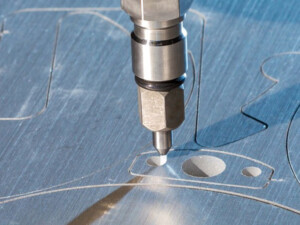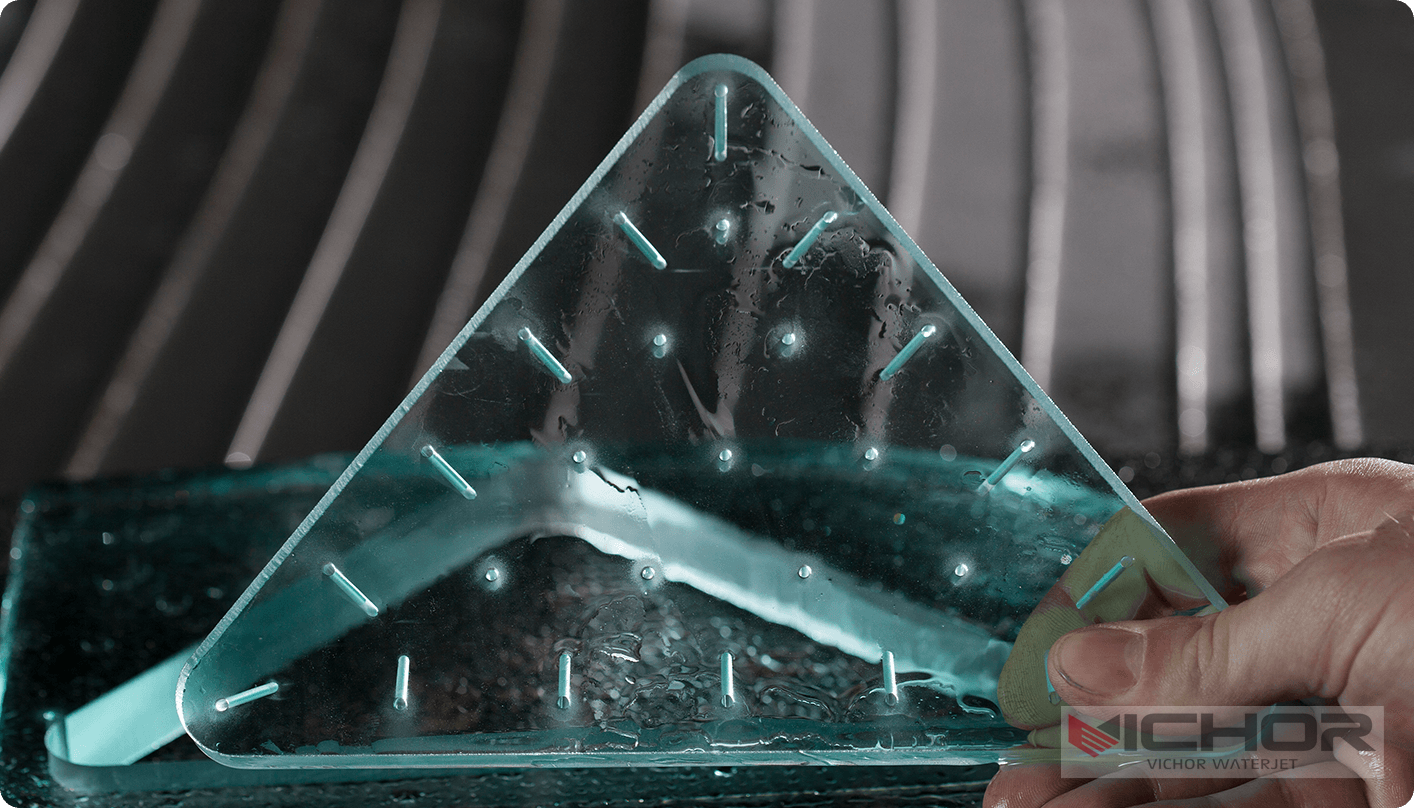
All Water Jet Cutting: Unlocking Precision and Versatility in Modern Manufacturing
In the world of industrial cutting and fabrication, few technologies offer the sheer versatility and precision of all water jet cutting. This innovative process, which harnesses the power of water at extreme pressures to slice through materials, has become a cornerstone for industries ranging from aerospace to art. But what does “all” truly encompass? It refers to the technology’s unparalleled ability to cut virtually all materials—metals, stone, composites, glass, plastics, and even rubber—with remarkable accuracy and without the thermal distortion that plagues other methods.
Whether you’re a seasoned engineer evaluating new fabrication methods or a curious designer exploring possibilities, understanding the ins and outs of all water jet cutting is crucial. This article dives deep into how it works, its vast applications, and why it might be the perfect solution for your most challenging projects. We’ll also integrate insights from VICHOR, a leader in advanced waterjet technology, to provide a real-world perspective on its capabilities and solutions.
What is All Water Jet Cutting? The Core Principles
All water jet cutting is a subtractive manufacturing process that uses a high-velocity stream of water, often mixed with an abrasive substance, to cut material. The term “all” is a testament to its incredible material versatility. The process begins with a high-pressure pump, typically intensifier-based, that pressurizes water to an astonishing 60,000 to 90,000 pounds per square inch (PSI). This ultra-high-pressure water is then forced through a small orifice in a jewel nozzle (usually made of sapphire or diamond), creating a supersonic stream.
For cutting hard materials like metal, stone, or ceramics, an abrasive material (typically garnet) is introduced into the stream in a mixing tube. This abrasive water jet transforms the stream into an incredibly efficient cutting tool, eroding the material with precision. For softer materials like foam, rubber, or food, a pure water jet (without abrasive) is used. This entire process is controlled by computer numerical control (CNC), which guides the cutting head along a programmed path dictated by a digital design file, ensuring extreme accuracy and repeatability for all water jet cutting applications.
The Expansive Applications: Where All Water Jet Cutting Excels
The “all” in all water jet cutting is not an exaggeration. Its application spans across more industries than perhaps any other cutting technology.
Aerospace and Aviation: Used for cutting intricate parts from advanced materials like titanium, aluminum alloys, and carbon-fiber composites. The cold-cutting process is critical here as it prevents altering the material properties of heat-sensitive alloys.
Architecture and Design: From precise countertops and intricate tile inlays in marble and granite to dramatic metal sculptures and architectural features, all water jet cutting brings complex designs to life with clean, finished edges.
Automotive Manufacturing: Ideal for cutting interior components (like carpets and gaskets with pure water) and exterior parts (like body panels and brake ducts with abrasive), streamlining prototyping and production.
Industrial Manufacturing: A workhorse for creating machine parts, tools, and components from stainless steel, brass, and copper. It is perfect for short runs and prototypes because it requires no custom tooling.
Art and Signage: Artists leverage this technology to create detailed pieces from a vast array of materials. Similarly, companies use it for producing high-quality, durable signs from metals and plastics.
VICHOR systems are engineered to thrive in all these environments, offering the reliability and precision needed for both heavy-duty industrial use and delicate artistic creation.
Unmatched Advantages: Why Choose All Water Jet Cutting?
The widespread adoption of all water jet cutting is driven by a unique set of advantages that other technologies struggle to match.
Zero Heat-Affected Zone (HAZ): This is the most significant benefit. Unlike laser, plasma, or flame cutting, waterjet is a cold process. It does not generate heat, which means no hardening, warping, or microstructural changes to the material. This guarantees the integrity of the cut part remains intact.
Material Versatility: It is the only true omnivorous cutting method. A single VICHOR machine can switch from cutting 6-inch thick titanium to a delicate chocolate design simply by adjusting pressure and deciding whether to use abrasive. This eliminates the need for multiple dedicated cutting systems.
High Precision and Quality: CNC control allows for exceptional accuracy, often within a tolerance of ±0.003 inches. The edge finish is typically matte and smooth, and the kerf (width of the cut) is very narrow, minimizing material waste.
Environmentally Friendly: The process produces no hazardous fumes or vapors. The primary waste products are water and garnet abrasive, which are non-toxic and can often be recycled or disposed of safely. It’s a cleaner alternative to many other industrial processes.
Ease of Use and Automation: Modern all water jet cutting systems are highly automated. After the design is loaded, the machine can often run with minimal operator intervention, leading to increased productivity and reduced labor costs.
Navigating Common Questions and Challenges
Despite its prowess, users often have specific questions and face operational challenges with all water jet cutting.
Q1: How thick of a material can a water jet actually cut?
While capable of cutting very thick materials, performance varies. Abrasive water jets can typically cut materials up to 12 inches thick, and in some cases even more. However, cutting speed decreases significantly as thickness increases. For example, a VICHOR machine might cut 1-inch thick aluminum quickly but will move much slower through 8-inch thick steel. The key is finding the balance between speed, quality, and thickness for your specific application.
Q2: What is “taper” and how is it corrected?
A natural characteristic of the abrasive water jet stream is that it loses energy as it cuts deeper, resulting in a slightly wider cut at the top than at the bottom—this is called taper. For many applications, it’s negligible. For others, advanced solutions are required. Modern systems, including those from VICHOR, employ software-based taper compensation. This technology tilts the cutting head slightly or adjusts the cutting path to produce edges that are perfectly square.
Q3: Is the operating cost of a waterjet system high?
The initial investment can be significant. Operational costs include electricity for the high-pressure pump, abrasive garnet (a consumable), water, and routine maintenance on pumps and nozzles. However, this must be weighed against the benefits: no cost for custom tooling (like dies), the ability to cut any material, and reduced secondary finishing. For job shops handling diverse materials, the ROI of a VICHOR system is often quickly realized.
Q4: How do you maintain a waterjet system to ensure longevity?
Regular maintenance is straightforward but critical:
Orifice and Mixing Tube: The sapphire/diamond orifice and carbide mixing tube are wear items and must be replaced regularly for optimal performance.
High-Pressure Pump: Seals, valves, and intensifiers need periodic inspection and replacement as part of a preventive maintenance schedule.
Abrasive Delivery System: The abrasive hopper, feed line, and on-off valve must be kept clean and free of moisture to prevent clumping and ensure a consistent flow.
Proactive maintenance supported by VICHOR’s guidelines ensures maximum uptime and consistent cut quality.
Q5: How does cutting speed compare to lasers or plasma?
For thin metals, lasers are generally faster. For very thick metals, plasma might be faster but with a much lower quality cut. The true strength of all water jet cutting is not being the absolute fastest on every single material, but being the most consistently capable across all materials and thicknesses without compromising material properties. It offers the best blend of quality, versatility, and speed for a mixed-material workflow.
Selecting the Right System: A Guide Featuring VICHOR
Choosing an all water jet cutting system is a major decision. Here’s what to consider, with VICHOR as a benchmark for quality:
Pump Type and Pressure: Determine if an intensifier pump (higher pressure, excellent for hard materials) or a direct-drive pump (lower cost, good for softer materials) suits your needs. VICHOR offers robust intensifier pumps known for reliability and consistent high pressure.
Table Size and Configuration: The machine’s table must accommodate your largest expected workpieces. Consider a water table, slat configuration, and tank depth.
Control Software: The brain of the operation. Look for intuitive, powerful software that includes features for taper compensation, nesting parts to save material, and easy file import. VICHOR prides itself on user-friendly software that simplifies complex cuts.
Brand Reputation and Support: The manufacturer’s support is crucial. Ensure they offer comprehensive training, readily available technical support, and a reliable supply of spare parts. VICHOR’s global support network is a key advantage for businesses where downtime is costly.
All water jet cutting has cemented its role as an indispensable, flexible, and powerful technology in modern manufacturing and design. Its ability to handle literally any material with precision and without thermal damage makes it a unique and valuable asset. While considerations like operational costs and taper exist, they are effectively managed by technological advancements and proper practices, especially with reliable partners like VICHOR.
As industries continue to innovate with new materials and complex designs, the demand for a capable and universal cutting solution will only grow. All water jet cutting is not just a tool for today; it is a foundational technology for the future of fabrication, enabling creators and manufacturers to push the boundaries of what is possible.
continue reading


